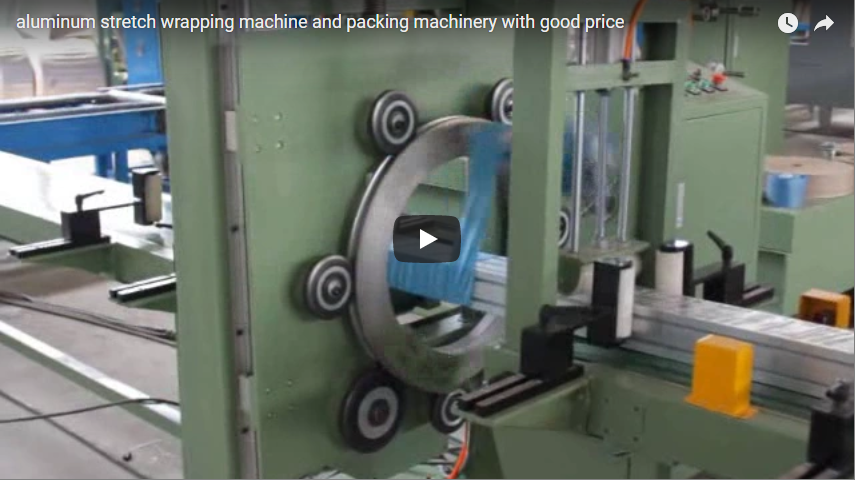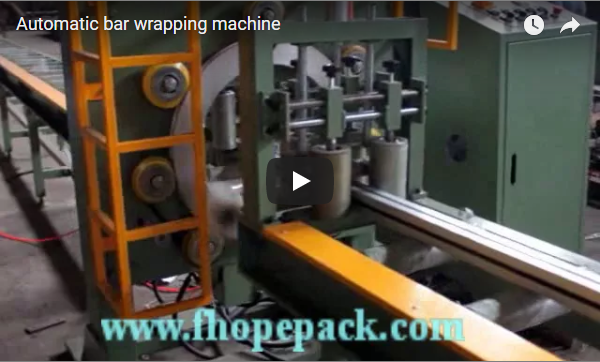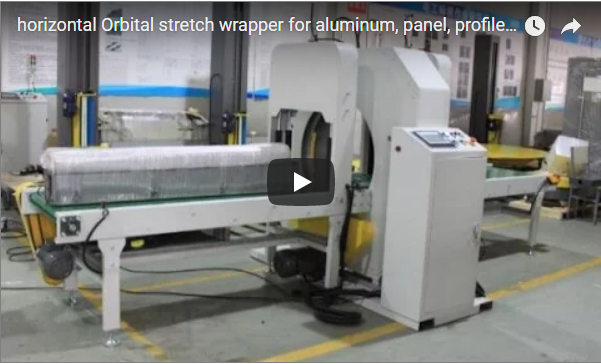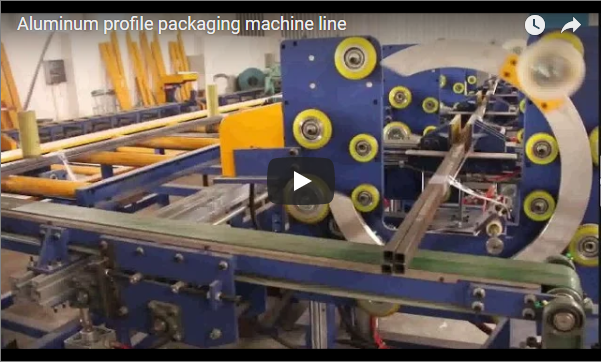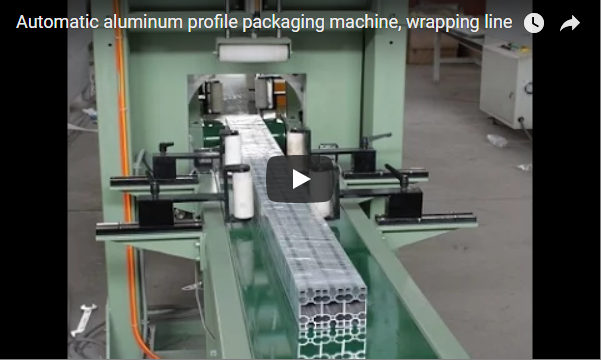Boosting Shop Floor Efficiency: Mastering Aluminum Profile Packaging with Automated Stretch Wrappers
Handling and packaging aluminum profiles – whether extrusions, pipes, or window frames – presents unique challenges for fabricators. Their length, susceptibility to surface damage, and varying shapes demand a robust, consistent, and efficient packaging solution. Manual wrapping methods often fall short, leading to inconsistencies, potential damage, and significant labor costs. Enter the automated aluminum profile stretch wrapping machine: a game-changer for streamlining operations and ensuring product integrity.
1. The Bottleneck: Why Manual Aluminum Profile Wrapping Falls Short
Wrapping aluminum profiles manually, especially long or bulky ones, is often a significant operational bottleneck. The challenges are numerous:
- Labor Intensity: Requires considerable manpower, diverting skilled workers from other value-adding tasks.
- Inconsistent Application: Achieving uniform stretch film tension and overlap manually is difficult, leading to potential weak spots or overly tight wrapping that could damage delicate finishes.
- Risk of Damage: Manual handling increases the chances of scratches, dents, or abrasions on the profile surfaces during the wrapping process itself.
- Material Waste: Inconsistent stretching and application often lead to higher consumption of stretch film than necessary.
- Slow Throughput: Manual wrapping is inherently slower, limiting overall packaging speed and potentially delaying shipments.
2. The Automated Advantage: Introducing the Orbital Stretch Wrapper
The Aluminum Profile Stretch Wrapping Machine, typically an orbital wrapper design, offers a definitive solution to these challenges. This specialized equipment automates the process by passing a roll of stretch film around the stationary or conveyed profile, encasing it securely and efficiently.
3. Technical Deep Dive: Key Features and Specifications
Understanding the machine's capabilities is key for fabricators considering automation. Here’s a breakdown of typical features:
- Machine Type: Orbital Stretch Wrapper.
- Operation Mode: Often available in semi-automatic (operator initiates cycle) or fully automatic (integrated into a production line) configurations.
- Profile Handling:
- Designed for long products like aluminum extrusions, pipes, panels, doors, and window sections.
- Accommodates a wide range of profile cross-sections and lengths.
- Wrapping Ring:
- Available in various ring diameters (e.g., common sizes range from 15 inches up to 90 inches) to suit different maximum profile dimensions.
- Rotation speed is typically adjustable.
- Wrapping Material: Uses standard LLDPE (Linear Low-Density Polyethylene) stretch film.
- Film Carriage System:
- Often includes a powered pre-stretch mechanism (stretching the film before application), significantly reducing film consumption (up to 200-300%).
- Adjustable film tension control ensures optimal wrap tightness for different profile types and weights.
- Control System:
- PLC (Programmable Logic Controller) for reliable process automation.
- HMI (Human-Machine Interface) touchscreen for easy parameter setting (e.g., number of wraps at ends, ring speed, conveyor speed, film tension).
- Wrapping Process:
- Automated film clamp, cutting, and wiping functions for seamless cycle start and end.
- Adjustable conveyor speed (if applicable) to match wrapping speed.
- Variable overlap control for complete product coverage.
- Construction: Robust, heavy-duty steel frame for durability in industrial environments.
- Safety Features: Equipped with safety interlocks, emergency stop buttons, and guarding around moving parts.
- Optional Add-ons: Infeed/outfeed conveyors, top pressure rollers (for stabilizing loose bundles), integration sensors.
4. From the Shop Floor: Tangible Benefits Realized
Implementing an automated stretch wrapper translates technical features into real-world operational gains:
- Enhanced Throughput: Dramatically increases wrapping speed compared to manual methods, boosting overall packaging capacity.
- Superior Product Protection: Consistent, tightly applied stretch film provides excellent protection against dust, moisture, scratches, and shifting during transit.
- Reduced Labor Costs: Reallocates workers previously tied up in manual wrapping to more productive roles. Often, one operator can manage the machine.
- Optimized Material Usage: Powered pre-stretch systems significantly cut down on stretch film costs per package.
- Improved Safety: Minimizes manual handling of large, awkward profiles, reducing the risk of worker injury.
- Professional Presentation: Consistently wrapped products present a more professional image to customers.
- Process Consistency: Every profile or bundle is wrapped to the same pre-set standard, ensuring quality and reliability.
5. Making the Switch: A Fabricator's Perspective
Moving from manual wrapping teams to an automated stretch wrapper often transforms the packaging area. What was once a potential bottleneck becomes a smooth, predictable part of the workflow. Operators appreciate the ease of use – setting parameters on the HMI is straightforward, typically involving inputs for wrap counts, tension, and conveyor speed. The most significant impact, however, is often seen in reduced damage claims and positive customer feedback regarding the professional appearance and integrity of the delivered aluminum profiles upon arrival. The machine's reliability ensures consistent output shift after shift.
6. Considerations for Implementation
When selecting an aluminum profile wrapping machine, consider:
- Profile Dimensions: Ensure the machine's ring size and throughput capacity match your largest and most common profile sizes.
- Throughput Requirements: Match the machine's cycle speed to your production output needs.
- Level of Automation: Decide between semi-automatic or fully automatic integration based on your existing workflow.
- Space and Layout: Consider the machine footprint and integration with existing conveyor lines or staging areas.
7. Elevating Your Aluminum Packaging Process
Investing in an aluminum profile stretch wrapping machine is more than just acquiring equipment; it's a strategic move to enhance operational efficiency, safeguard product quality, and reduce packaging costs. For fabricators handling significant volumes of aluminum profiles and extrusions, automation offers a clear path to improved productivity, reduced waste, better product protection, and ultimately, increased profitability. It addresses the specific challenges of aluminum handling head-on, delivering a solution tailored to the needs of the modern fabrication industry.

